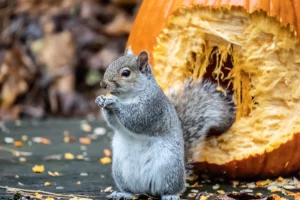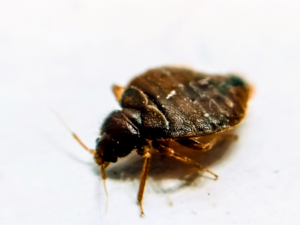Home / Blog / 9 Foods in Your Home That are Pest-Magnets You Didn’t Know About
9 Foods in Your Home That are Pest-Magnets You Didn’t Know About

Scientifically reviewed by Daniel Baldwin, BCE, CCFS, CP-FS
-Published on December 16, 2022
-Updated on July 13, 2023
If you are fighting a pest infestation in your home and having little success, the key to your struggles might lie in your kitchen! Some of our favorite foods, like bread and jelly, are also delicatessens for unwanted pests and bugs. Read on to discover the top nine foods in your home that attract pests and what you can do to keep those bugs at bay.

Foods that attract pests in your home
If you have ever sleepily picked up your coffee mug in the early morning to discover a revolting cockroach scurrying away, you will know the horror these little creatures can cause. Pests are a food safety hazard and a disgusting presence in any kitchen.
Ants, rats, wasps, and many other repulsive or dangerous vermin are naturally attracted to your kitchen because of the strong smells wafting from it. But the last thing you want is for them to associate your home with the place they find food, or you’ll never get rid of them. So let’s get straight into the top nine foods that are pest magnets and what you can do to prevent an infestation.
1 – Bread
Unfortunately, humans are not the only ones who love bread. Rats and rodents also enjoy digging their teeth into it. In fact, while rats eat almost anything, rice, flour, grain, and processed foods are their preferred meal. What attracts these scurrying pests is the high caloric charge of bread — meaning eating some is the same as eating chips for us.
Wherever you keep your loaf of bread, make sure it’s properly stored and safe from unwanted visitors. Rats are excellent at climbing and jumping, so avoid any open cupboard. Since even just a few crumbs of bread are enough to attract pests, thoroughly clean your chopping board, the table, and the floor after every meal.
2 – Peanut butter
Who doesn’t love peanut butter? An easy grab-and-go breakfast or a delicious snack, peanut butter on toast is a favorite of many Americans. Unfortunately, cockroaches and rodents are huge fans of peanut butter as well.
Rich in protein and fat, peanut butter is an irresistible treat for German cockroaches and may very well be the cause behind your roach problem. A study has shown that peanut butter attracts more German cockroaches than any other oily human food.
The smell and taste of peanut butter are also a magnet for rats and mice, who revel in the spike of energy they get from eating this high-fat food. No matter where you keep your peanut butter jar, make sure it’s somewhere they can’t hunt it out.
For the best chance of success in keeping pests away, always clean the outside of the jar of any oily residue or peanut butter spills and store it in a closed cupboard.
3 – Honey, maple syrup, and jelly
Ants love sweet, sugary foods, so honey, maple syrup, and jelly are right in their sights. These foods are excellent nourishment for them as they get a burst of energy from the sugar.
Most kitchens have a space where these food items get spilled, leaving an attractive meal behind for these little critters. The problem is that if even just one or two ants stumble upon it, they’ll create a scent trail that will lead the entire colony to your kitchen in no time.
Ants are not the only pests who have a sweet tooth. Some stinging insects, like wasps, are also attracted to anything sweet and would love nothing more than filling up on your honey, maple syrup, or jelly.
After you’ve enjoyed your meal, take out the kitchen counter spray and a cleaning cloth to wipe down the area and make sure there’s no sweet residue beckoning all of these unwelcome critters to your home.
4 – Cake, cupcakes, and other sweets
Many pests are attracted to foods containing carbohydrates such as cakes, cookies, and other baked goods. Rats and mice love the higher caloric density of cakes and will sniff out even the smallest of crumbs in your kitchen or on your dining room floor.
Candy, cupcakes, and other sugary treats also attract pests like rodents, ants, and wasps. The best way to prevent these invasive critters from coming into your home is to always keep baked goods and other sweets in an airtight container and clean up after yourself.
5 – Seeds
Seeds are great for our nutrition, and incorporating a variety of them into our diet is proven to have major health benefits. You just want to make sure you are the only one enjoying them!
Rodents love to eat seeds. In the same way we feed pet hamsters pumpkin seeds, wild rodents will scour your home for any tasty treat they can get their tiny hands on.
Pumpkin, sunflower, sesame, flax, wheat seeds, and corn kernels are all in rodents’ crosshairs. As they’re rich in vitamins, fats, and minerals, rats and mice will gorge on all types of seeds.
It’s easy to spill a few seeds from the bag and tricky to seal it tightly. Open bags in the pantry are a beacon for rodents and a big no-no in pest control. To make your life easier and keep these little tasty nuggets safe from rodents, use airtight glass jars or Tupperware for storage.
6 – Alcohol and juice
The high sugar level of alcoholic drinks and fruity juices makes them a very attractive food for a variety of pests. Fruit flies and wasps will swarm over any sugary drink spills if given the chance, whether they’re on your kitchen counter or under the refrigerator.
A few of these flying insects go beyond being a nuisance and can quickly turn into a real problem. Female fruit flies can lay up to 2,000 eggs, and tiny maggots can emerge within 30 hours, meaning a full-scale infestation can rapidly come about if you are not careful.
To prevent fruit flies and wasps from being attracted to your home, never leave open alcohol bottles lying around the house, and clean up any spills immediately.
7 – Fresh fruits and vegetables
Fruit and vegetables, especially overripe and old ones, are really high in sugar content. As we just talked about, fruit flies love nothing more than a sugar hit! Ripe fruit and old vegetables are also a magnet for other pests. Mosquitoes, ticks, and rodents will all try to get a bite. Even bees will come if they catch the scent of lemons. These pests will not only ruin your produce, but they can cause bacterial contamination as well.
You can keep enjoying your fresh fruit and vegetables, just be smart about how you store them! If you want to use a fruit bowl, keep it covered. Alternatively, pop them in the fridge, where no vermin can get to them.
8 – Water
Stagnant water in your home can attract pests. Mosquitos, carpenter ants, cockroaches, and termites all thrive near still water. A sink left full for a long time, the base of an overwatered plant, or a forgotten glass of water all have the potential of becoming breeding grounds for some of these unsightly pests.
These vermin can use the still water to drink or as reproductive grounds. If you are not careful, you’ll end up with a large infestation in no time. Luckily, it’s quite easy to take steps to make sure there’s no stagnant water around your home. Common sense and vigilance go a long way here.
9 – Pet food
Our food is not the only meal that pests go for — our pets’ food is also a target! If you have a dog, cat, hamster, guinea pig, or any other animal, chances are you put food down for them, and it sits there for a while. If that’s the case, be wary. Rodents will also come for a nibble, and once they get a taste, they’ll be back!
That lovely (and costly) pet food we get our furry family members — nutritionally balanced and rich in proteins and carbohydrates — will keep the rat population very well fed. Want to avoid having scurrying little visitors in your home and endangering your family and your pets’ health? Seal your pets’ food package and only put in their bowl what they will eat in one sitting.
DIY control measures
With so many of our favorite foods attracting pests to our homes, there are some good habits you can adopt to make sure you are not feeding unwanted guests. These are our best DIY tips for keeping vermin away from your kitchen:
- Store all dry foods in airtight containers
- Cover fruit and vegetables if left on the kitchen bench
- Stay on top of your pantry by cleaning it regularly and disposing of goods past their use-by date
- Clean spills, crumbs, and dirty dishes immediately
- Regularly check for fresh produce going off
- Throw out rubbish every few days and frequently clean the inside of the bin
- Monitor your pet bowls and don’t overfill them with food
Protect your home with professional pest control
If it’s too late for preventative tips and you can see signs of pest infestation in food or your home, it might be time to turn to the industry experts. Residential pest control technicians will quickly get on top of any vermin epidemic so you can keep enjoying your meals in peace.
Armed with our best DIY pest control tips and the knowledge of which foods attract pests to your home, you are well-equipped to prevent any pest infestation caused by fresh and stored foods.
Related Articles
Visit our blog to learn more.
→














